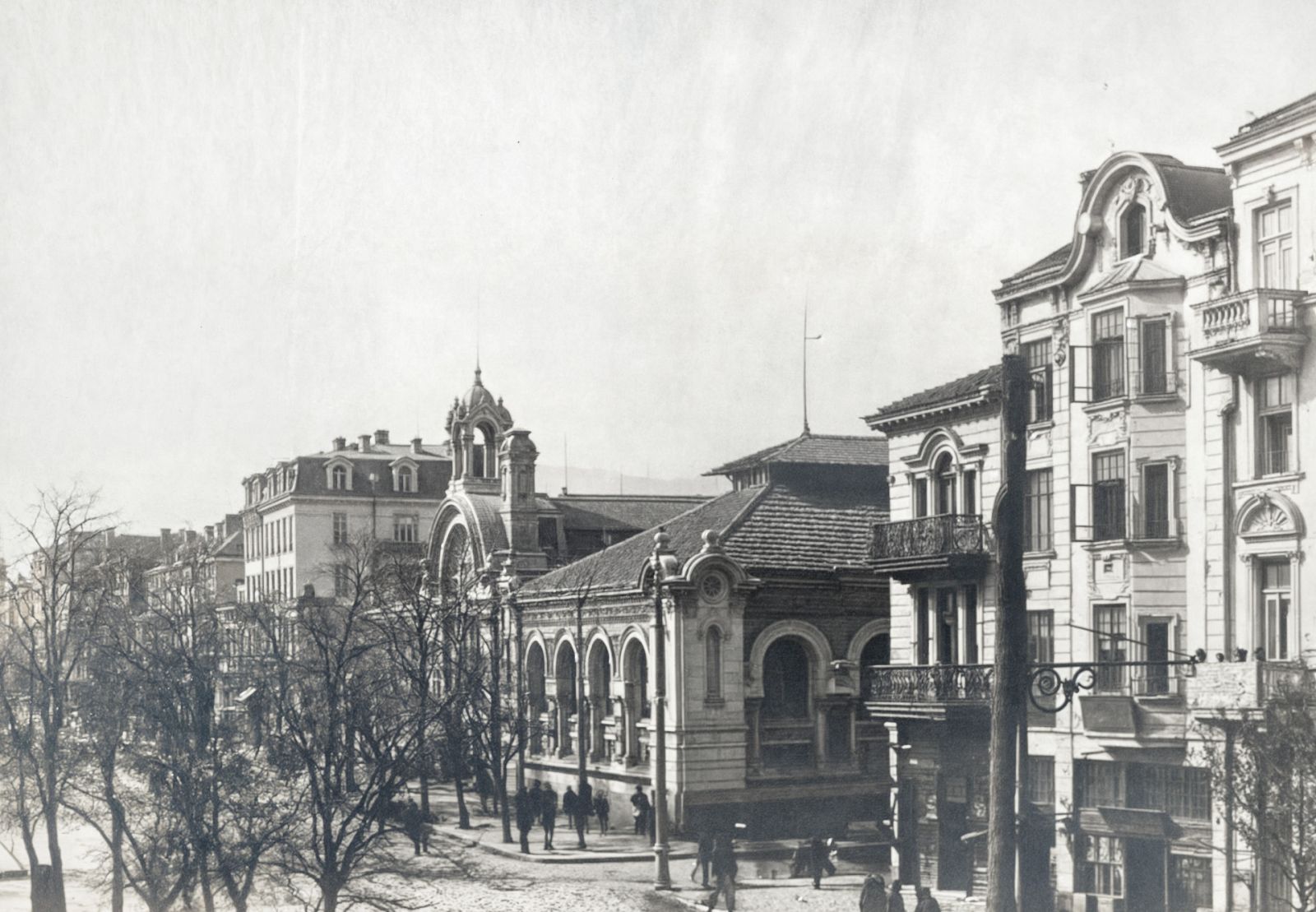
Архив - „РИМ – София“ Central Market Hall with the Clock Tower, before the installation of the clock, 1913-1914
RHM-SOFIA ARCHIVE
„Централните софийски хали и сега правят впечатление с огромните си размери. За София по онова време [1911-20-те г.] тук бе градският център за продоволствени стоки на дребно. В миналото халите се огласяха от виковете и тропота на продавачите като в някой източен пазар. Ехтяха касапските магазини, викаха и предлагаха и останалите продавачи. Сред купувачите гърмяха бързите колички, с които се внасяха продуктите сред непрекъснатото „Вардаа!“ на тикащите ги. За да привлече вниманието на купувачите към себе си и към своя магазин, за всяка и най-малка манипулация частникът имаше навика да вдига много шум, за да покаже, че магазинът и стоката му са търсени много. Така например касапинът удряше ненужно силно месото, когато го режеше, пък и даже пъшкаше, като че цепи дърва. При зарзаватчиите ще ти продадат един килограм картофи, но всеки ще чуе как един мери, хвърляйки отвисоко грамовете в теглилката, друг вика „Плаща!“, а после високо – „Ресто, молим!“. Даже бръснарят цъкаше с ножицата над и около главата повече, отколкото бе нужно, за да подстриже косата, а кебапчиите непрекъснато щракаха из въздуха с машите си. В халите викаха и сиренарите, чуваха се гласовете и на рибарите, пееха зарзаватчиите, които хвалеха „зарзавато“. Днес [60-70-те г.] и при най-голяма навалица е тихо. Някой ще каже:„ Язък за хубавото ехо на този грамаден като самолетен завод салон.“ Но сигурно и веднага ще добави: „Важно е пазарът да е почтен, за шумотевицата не жаля!“
Петър Мирчев. Книга за София, 1979.
“The Central Sofia Market Hall is impressive even today with its enormous dimensions. For Sofia at that time [1911-1920s] this was the city centre for retail foodstuffs. In the past, the market hall used to echo with the shouting and noises of the salesmen just like at any Oriental market. The butcher’s shops resounded, the other salesmen were shouting and offering. Among the buyers rumbled the fast carts with which products were brought in, amidst the ongoing “Look out!”, “Make way!” shouts of those pushing them. To attract the buyers’ attention to themselves and their shops, private sellers were in the habit of making a lot of noise for even the most insignificant manipulation in order to demonstrate that their shop and goods are very much preferred. For example, the butcher would hit the meat with unnecessary strength while cutting it, he would even groan as if he were chopping wood. The greengrocer would sell you just a kilo of potatoes but everyone would hear the greengrocer weigh, throwing the weights from high above onto the scales, another one would shout out loud: “Pay please!” and then even louder “Change, please!”. Even the barber would click the scissors above and around the head more than necessary to cut the hair and the kebab makers did not stop clicking their tongs in the air. The cheese makers also shouted in the hall, you could also hear the voices of fish sellers; the greengrocers used to sing in praise of their vegetables. Today [1960s-1970s] it is quiet even when it is most crowded. Someone might say “I miss the nice echo of this hall as large as an aircraft factory.” But they will most probably immediately add “It is important that the market is honest, I will not regret the noise!“
Petar Mirchev. A Book about Sofia, 1979.
